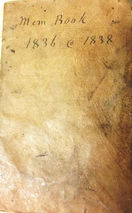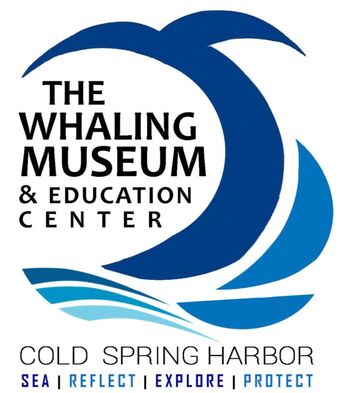 This 1836 Leather-bound journal of Captain Richard S. Topping of the Bark Monmouth is just one of the artifacts to be digitized with this grant. This 1836 Leather-bound journal of Captain Richard S. Topping of the Bark Monmouth is just one of the artifacts to be digitized with this grant. After 81 years in the dark, The Whaling Museum & Education Center will be shining some light on its hidden collection through a generous grant from the National Park Service’s Maritime Heritage Grant Program. Part of a 1:1 match of $49,557, this funding will allow the museum to digitize, preserve, and create publicly available online access to an estimated 2500 items selected from its permanent collection. The considerable project, scheduled to be completed by 2019, will dramatically increase access to the museum’s significant and historical collections by producing publicly accessible digital archives, and will enhance public awareness and appreciation for the key role whaling played in our country’s maritime heritage. As part of the project, the museum will also produce object-based curricula and teaching materials for schools which highlight using the online collection in classrooms. An essential component of this project will be digitizing the museum’s archives, a largely untapped and unknown resource which offer perspectives, insights, and research opportunities not found in any other museum. This includes 95% of the existing manuscript material from the Cold Spring Harbor whaling fleet, records of the Long Island coastwise trade under sail, crew lists, shipping papers, prints, photographs, and correspondence. Together, these archives form a rich visual record of Long Island’s development as a historically prominent whaling center. Executive Director Nomi Dayan explains, “We are honored and excited to be one of three New York organizations successfully awarded this year by the National Maritime Heritage Program. When visitors view our exhibits, most don’t realize that what they’re seeing is the tip of an iceberg, as approximately 5% of our collection is on view at one time. This project helps us extend past restricted physical space and enhances our institutional capacity to both preserve the collection through digitization, as well as better serve the public by making largely unknown resources publicly available online. Ultimately, we hope this project will engage the public in ongoing conversations about the social, cultural, political, economic, and environmental forces of our whaling heritage that have shaped our country.” Dayan added, “This project will also open the museum’s doors to a global audience. In the past few months, we have received research inquiries from individuals from Australia to Chile. This project will radically enhance access without having to rely on staff time or necessitate travel to the museum.” Currently, the only way browse the collection is to physically cruise the tightly packed drawers, folders, and boxes in storage, which is inefficient and compromises the items’ fragility. Online access with a searchable database is a vital tool for promoting public appreciation and understanding of history – and in the case of whaling history, connecting the processes, events, and interactions among people and whales to scientific and cultural understanding today. “This is a very exciting time for the museum's collections, says Collections and Exhibitions Manager Kyrsten Polanish, “This project will help to prolong the life the objects by reducing the amount of times objects are physically handled while making them more accessible to anyone wanting to find out more about maritime history.” Improved cataloging, digitization, preservation, and documentation for the artifacts would elevate the museum’s archives to the current best practices of collections management. The museum’s archives are currently available for research by appointment only.
0 Comments
|
WhyFollow the Whaling Museum's ambition to stay current, and meaningful, and connected to contemporary interests. Categories
All
Archives
May 2024
AuthorWritten by staff, volunteers, and trustees of the Museum! |


 RSS Feed
RSS Feed
